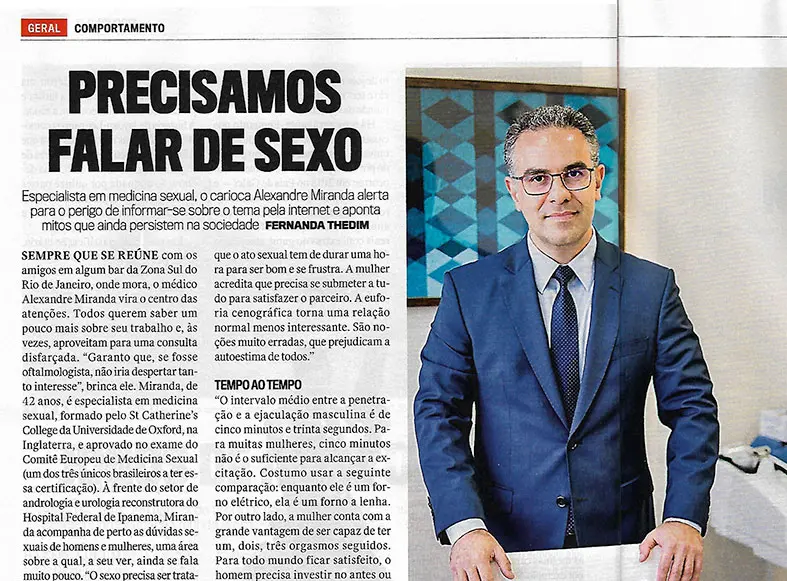Linear Focal Acoustic Therapy
New curative treatment for erectile dysfunctionErectile dysfunction
Treatment options
Existing
- Oral medication (little blue)
- Injection of vasodilator drugs into the penis
- Vacuum pump
- ...

Disadvantages and problems
- Side effects of oral drugs (little blue)
- They only treat the symptoms
- They're expensive over time (they don't cure, they just work for as long as the drug has an effect)
- Lack of spontaneity
- Reduced self-confidence
- Psychological problems
- ...
Erectile function
Healthy blood vessels matter!
Erection is the result of a complex synergy between blood vessels, the nervous system, hormones and muscles. During erection there is an increase in blood flow to the penis, which leads to a rise in intra-penile pressure. Adequate blood flow into the corpus cavernosum (penis) is essential for good penile rigidity.

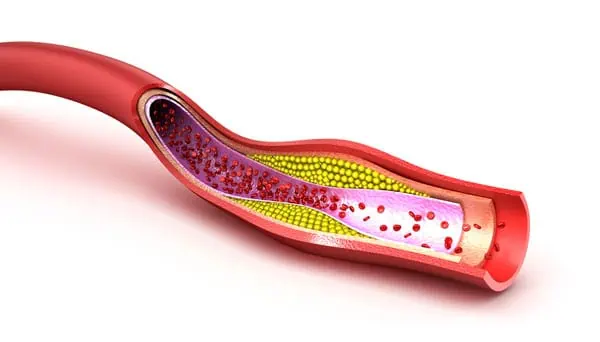
Arterial Factor in Erectile Function!
A decrease in arterial flow to the penis generates a reduction in venous compression, resulting in a loss of penile rigidity. Arteriosclerosis is one of the best-known causes of this reduction, leading to erectile dysfunction.
Risk factors
- Smoking
- Diabetes mellitus
- Hypertension
- Hypercholesterolemia (high blood cholesterol levels)
- Chronic kidney disease
Linear Acoustic Waveform with Tissue Coverage for Erectile Dysfunction (LSTC-ED)
A unique therapy concept
Treatment of erectile dysfunction using piezoelectric focal acoustic waves.
The LSTC-ED technique is a quick and painless treatment that manages to cover the entire corpus cavernosum. The wave-generating source is placed over the corpora cavernosa and moved longitudinally along the penis (corpora cavernosa) and perineum (crura peniana ). This results in a maximum, homogeneous, rapid transfer of energy, requiring only a few minutes to apply.
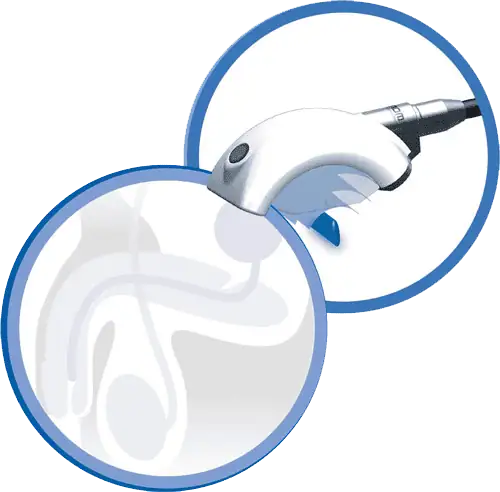

Treatment
The treatment is done in the office, without anesthesia. It is completely painless and only takes a few minutes.
The applicator is positioned over the corpora cavernosa and moved longitudinally along the penis.
The treatment is administered in 1-2 sessions / week. A total of 4-6 sessions are carried out. There are no known side effects.
Mechanism of Action!
Specific mechanical stimuli can influence the cellular functions of living tissue. The extracorporeal shock wave, a modern treatment established in medicine for over 30 years, activates mechanical sensors that trigger tissue biochemical changes.
Shockwave effects:
- Angiogenesis (appearance of new blood vessels)
- Improved microcirculation
- Relaxation of blood vessel smooth muscle (allowing more blood to enter the penis)
- Activation of local stem cells
- Improved nerve transmission in the penile nerves
Credibility and scientific evidence are important!
We have dozens of published medical studies, with meta-analyses, giving a 1A level of scientific evidence for the use of low-intensity shockwaves.
A multicenter study carried out in Germany with 75 patients using Piezowave2 showed a success rate of 81,3%.
Treatment of Erectile Dysfunction with PiezoWave2 Device. Application of Low Intensity Shockwaves Using Novel Linear Shockwave Tissue Coverage (LSTC-ED®) technique. A Prospective, Multicentric, Placebo-controlled Study.
Dr. Motil I. 1, Dr. Kubis I. 2, Dr. Sramkova T. 3

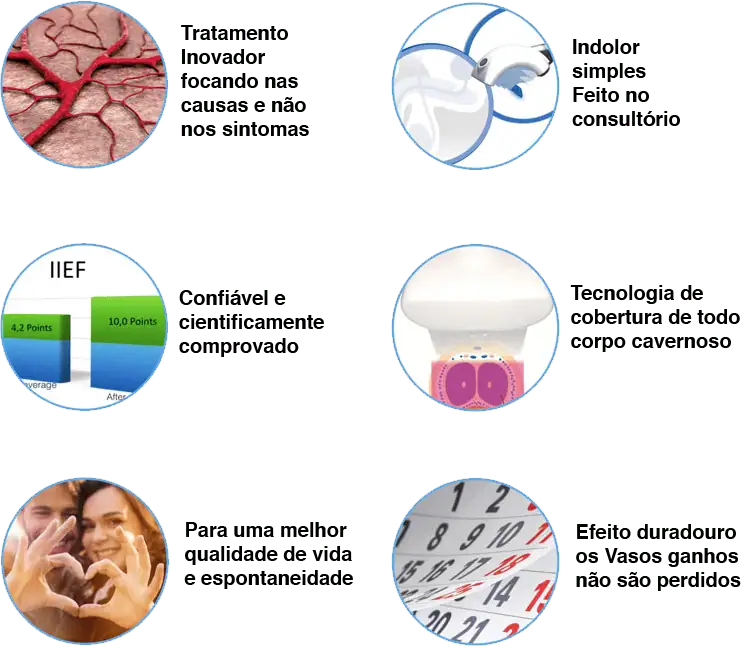
Book your appointment now
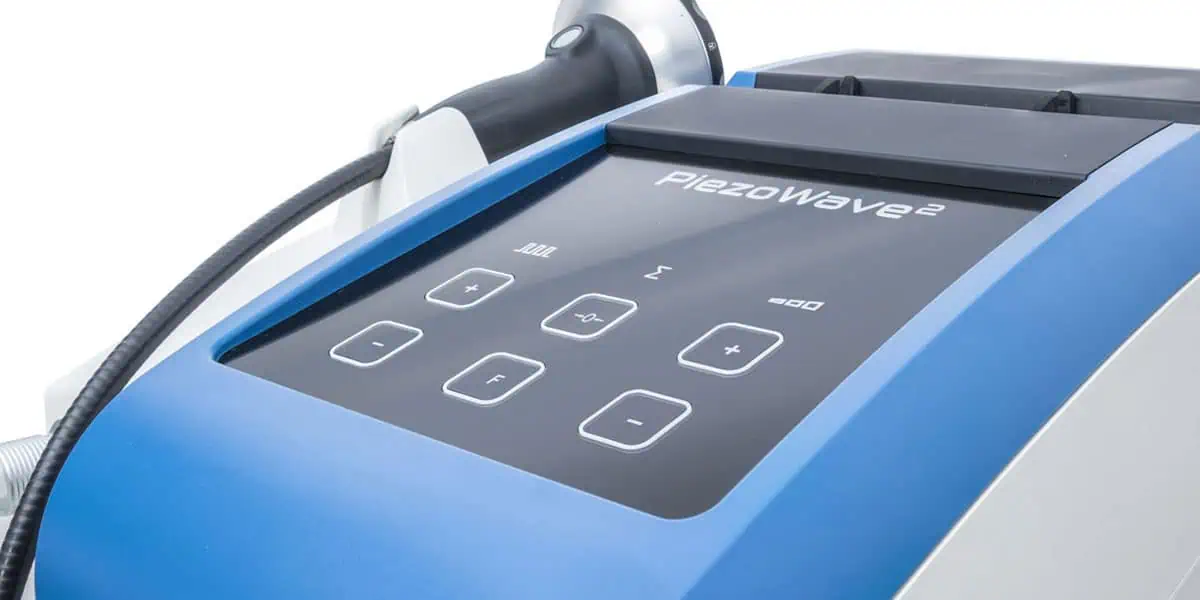
New Piezowave 2 machine. 15.5X greater volume of fabric treated than a conventional machine!
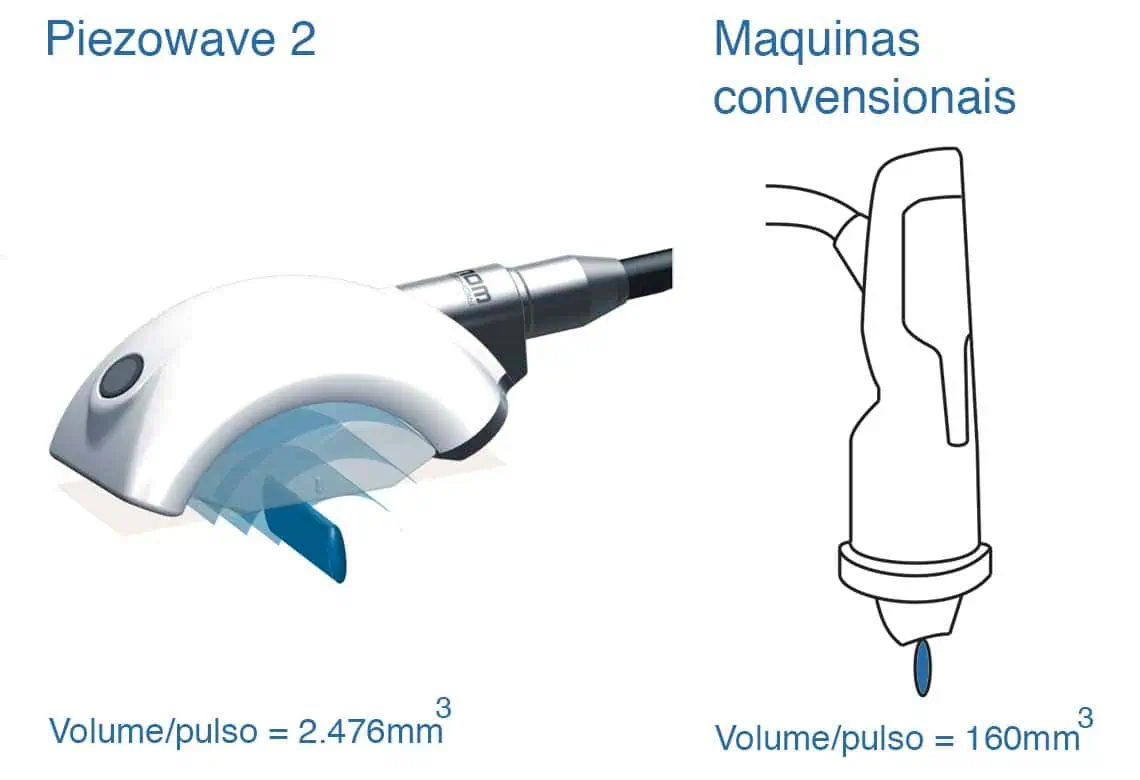
Faster and more effective treatment, covering much more tissue
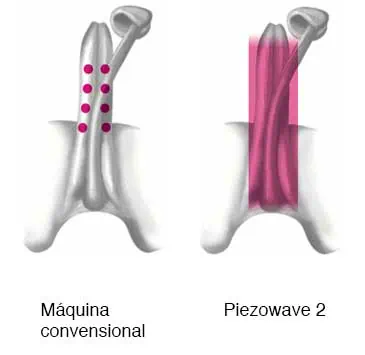
Scientific basis and history
INTRODUCTION
Recently, a promising modality has been introduced: Low Intensity Extracorporeal Shockwave Therapy (LICSWT) on the penis, first performed in 2010.
WHAT ARE SHOCK WAVES?
WHERE ARE SHOCK WAVES USED IN MEDICINE?
HOW DOES IT WORK?
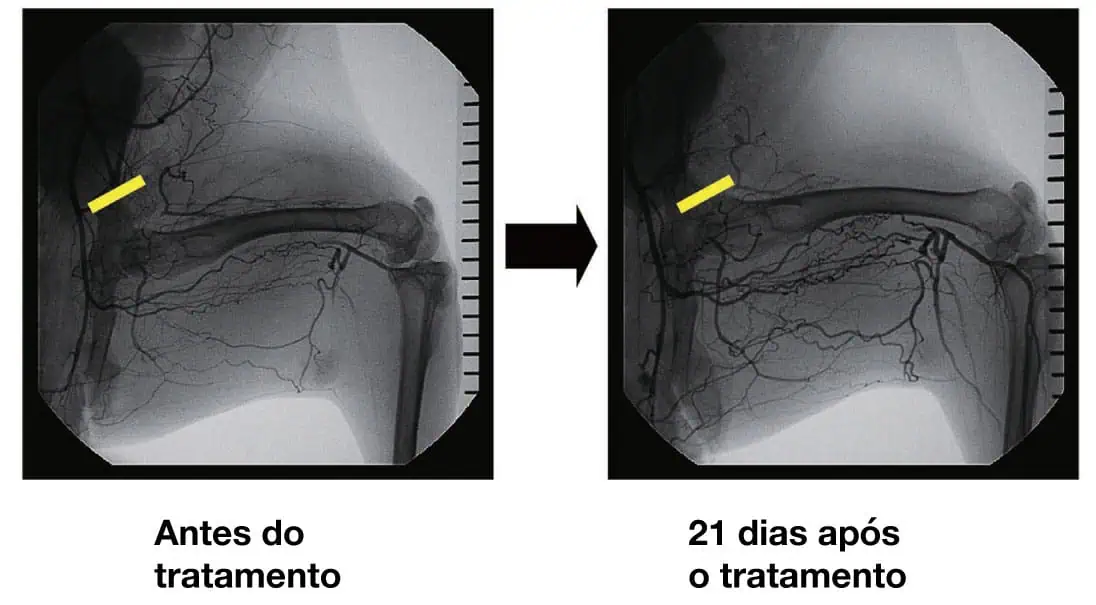
Stem cell activation
Today the low-intensity shock wave is considered a minimally invasive stem cell therapy.
Reference
Lin G, Reed-Maldonado AB, Wang B, Lee YC, Zhou J, Lu Z, et al. In Situ Activation of Penile Progenitor Cells With Low-Intensity Extracorporeal Shockwave Therapy. J Sex Med. 2017;14(4):493-501.

b) Penis of an animal subjected to a low-intensity shock wave
White arrows: Active stem cells (dividing and maturing)
CLINICAL APPLICATIONS OF SHOCKWAVE
Another application of the shockwave has been in orthopaedics, for the treatment of damaged muscles and tendon diseases.
In the treatment of wounds, shockwaves have also proven to be extremely effective, accelerating healing and improving ischemia in complex wounds, due to their ability to stimulate the appearance of new vessels and consequently increase vascularization.
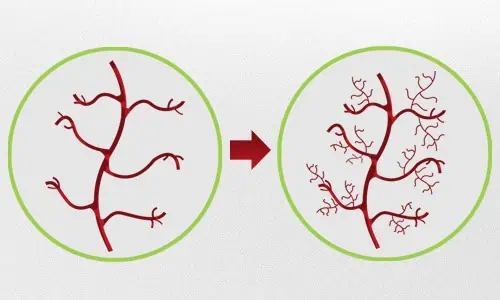
SHOCKWAVE APPLICATION IN ERECTILE DYSFUNCTION
One month after starting treatment, 75% patients showed a significant improvement in penile rigidity. In addition, nocturnal erections, which occur during the REM phase of sleep, were measured and showed a significant improvement in penile blood flow. Most of the men reviewed, after 6 months of treatment, continued to have spontaneous erections without the need to use oral drugs.

Following this encouraging result, other studies were carried out on animals. Several groups evaluated the effect of low-intensity shockwave therapy on the erectile function of diabetic rats. They evaluated the pressure inside the penis after stimulating the nerve that generates the erection. It was found that the erection of diabetic rats was reduced in all animals, but the animals subjected to shockwave therapy showed a much smaller reduction. In addition, analysis of the penile tissues of the animals subjected to shockwave therapy showed a much greater quantity of nerves containing nitric oxide (responsible for relaxing the smooth muscle inside the penis, allowing greater blood flow and penile rigidity), endothelial cells (cells present in blood vessels), smooth muscle cells and mesenchymal stem cells. These findings support the idea that one of the therapeutic mechanisms of the low-intensity shock wave is the recruitment of pluripotent cells, which circulate in the blood system.
Another study, carried out on rats whose nerves involved in erection had been severed, showed that the group that underwent low-intensity shockwave therapy showed regeneration of the severed nerves, the appearance of new blood vessels and increased pressure inside the penis. In addition, they showed a much higher concentration of progenitor cells (pluripotent cells) in the penile tissue.
Vardis and colleagues carried out new clinical studies on patients with vasculogenic erectile dysfunction (low blood supply to the penis). They tested patients who had poor penile rigidity following the use of medications such as azulzinho. The intention was to investigate the possibility of low-intensity acoustic wave therapy converting patients who were no longer "functioning" with the use of oral drugs (little blue) into "functioning" patients, i.e. who would now have good penile rigidity. The study was carried out on 29 patients who had multiple risks for cardiovascular disease, established cardiovascular disease and diabetes. All of them did not have adequate penile rigidity after taking the oral drug. After treatment 72% of them had good penile rigidity with the use of the oral erection drug. This increase in rigidity was accompanied by an increase in the inflow of blood to the penis and better function of the vascular tissues. Another important finding of the study is that no patient reported pain or any adverse event during treatment.
HOW IS SHOCKWAVE THERAPY PERFORMED?
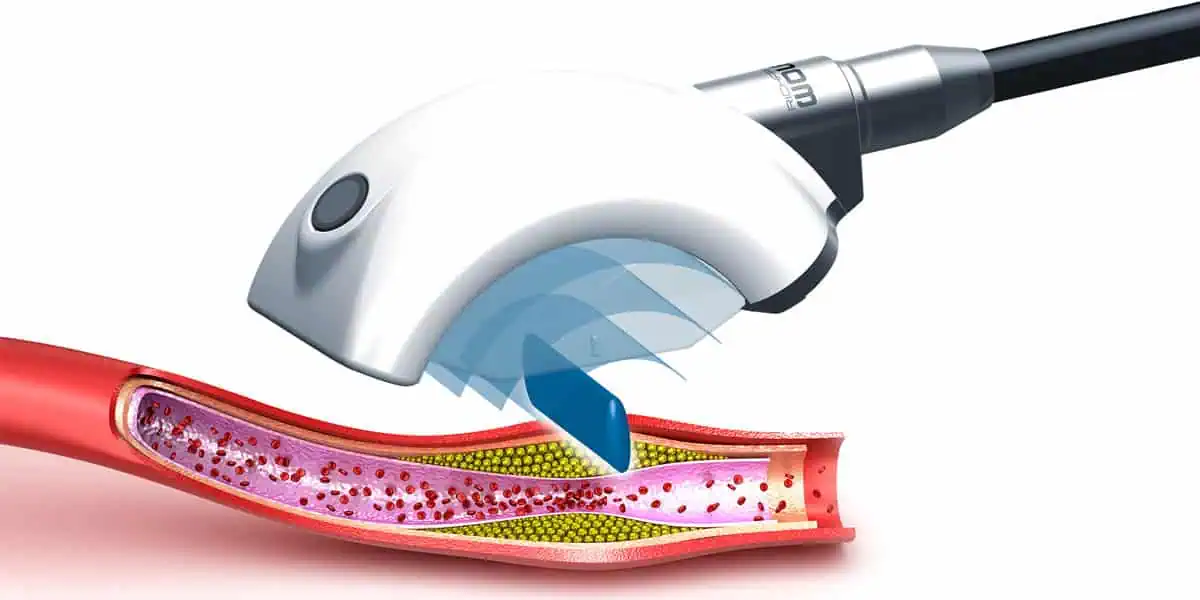
Linear focal acoustic wave being applied (illustrative image)
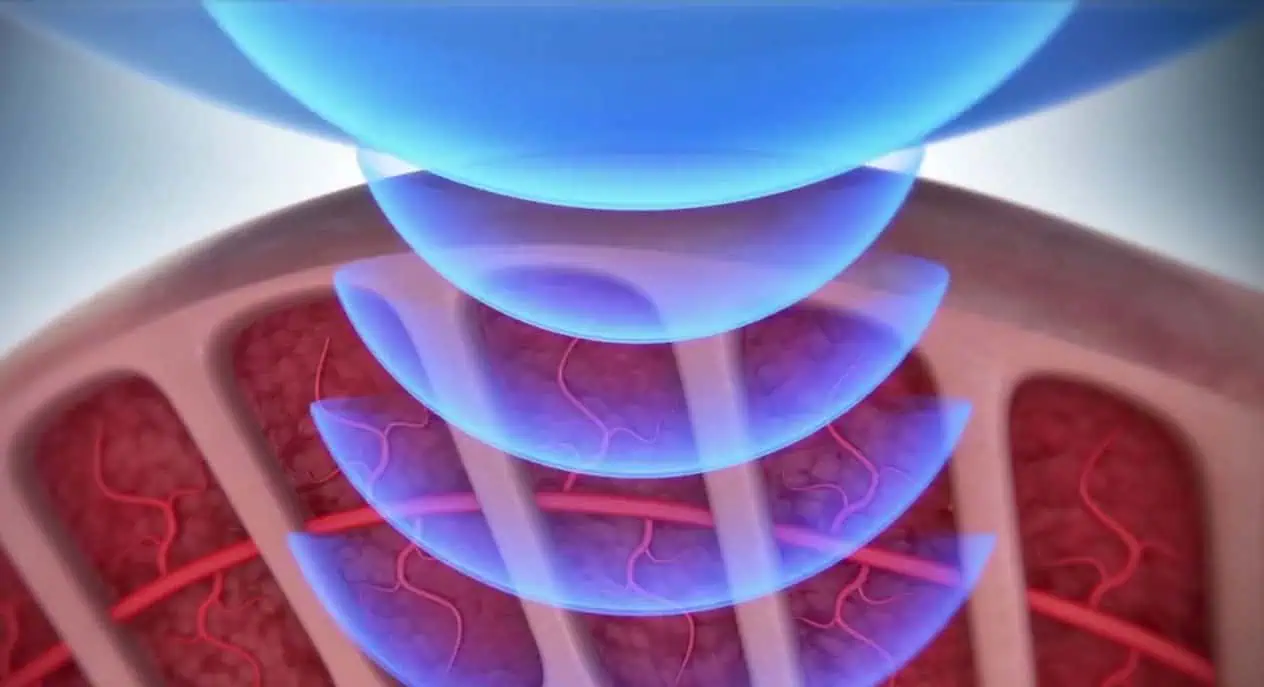
Book your appointment now
SCIENTIFIC EVIDENCE
SEE
Read the interview with Dr. Alexandre Miranda

